Music Video "durée"
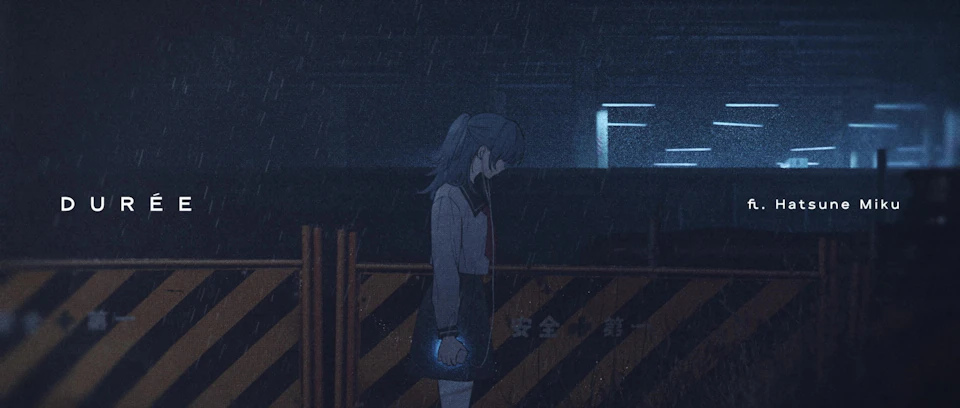
- Vocalist
- Hatsune Miku
- Sound / Writting / Screenplay / Direction
- Sheeno Mirin
- CGI(3DCG)
- Kazuya Ohyanagi
- Composition / Edit
- Yuzuri Hal
- Character Illustration
- Asama
- Typography / Graphic Design
- kohakuno
- Effect (Artificial Life Clip)
- Nagai
- Programming (Graphical)
- melonade
- Programming (Deta Analysis)
- naporitan
- Architectural Design Support
- Shibanuma
This works was written for Hatsune Miku's official Youtube channel "39ch".
Concept and Summary
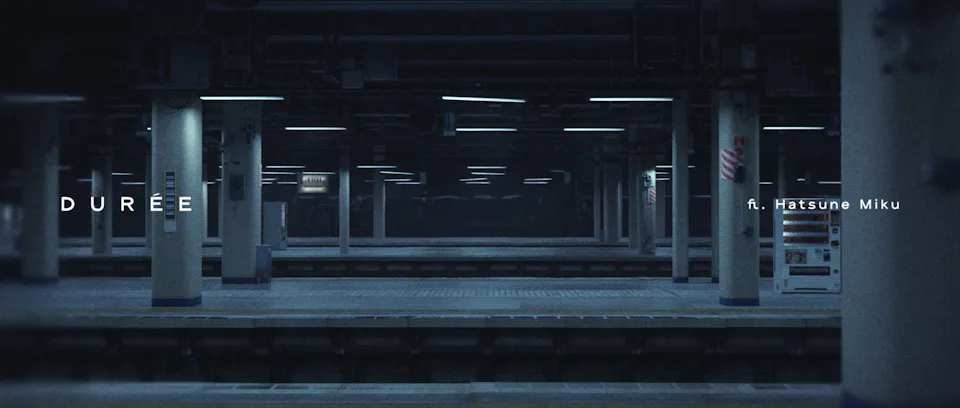
Hatsune Miku has created a unique cultural system based on User Generated Contents (UGC), innovating and expanding the existing musical and expressive forms. Nowadays, songs influenced by these innovations and expansions have penetrated the musical sphere, especially in Japan, where many songs rank high on prominent charts, constituting the core of “Gacha Pop”.
However, particularly from 2007, when Hatsune Miku was launched, to the early 2010s, Miku encountered intolerant exclusion in various places due to multiple factors, such as its moe-like character design, its impersonal nature, its distinctive mechanical sounds, or the prejudice against “otaku” that was deeply embedded in Japanese society at the time.
In many Japanese schools, music is broadcasted on the school radio during lunch break. VOCALOID songs are played on these radios, and some people mock the songs played, calling them “creepy”. Such a phenomenon was witnessed by many people who were student Hatsune Miku fans at the time. The fact that some people ridiculed Hatsune Miku at school, a place that symbolizes publicness and diversity, shaped the perception among fans that “the public scorns Miku, so we have to conceal the fact that we like Miku”. Although diversity is often used in a positive connotation, it also implied the fragmentation of society. It must be agonizing for anyone to endure “the feeling of being rejected by many for something important” during the vulnerable period of adolescence.
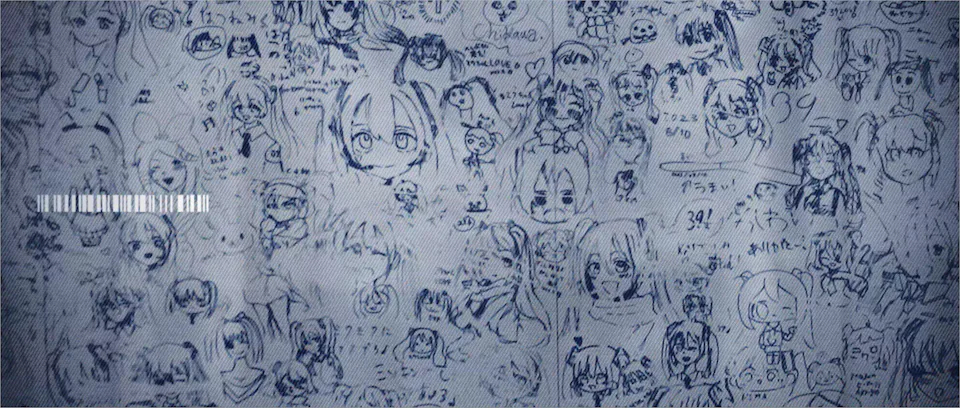
Since then, many years have elapsed, and with the ubiquity of smartphones and social networking services, the predominant mode of music consumption has migrated to the Internet. Internet communities and the general public have converged, and the boundaries between them have dissolved. Ordinary people have increasingly more chances to interact with anime, games, and other forms of media in their everyday lives, and the pejorative implications of the term otaku have diminished. Consequently, Internet culture, encompassing Hatsune Miku, is no longer a underground entity.
The VOCALOID community is now visited not only by a long-time fan, but also by a “segment of the population that is indifferent to VOCALOID,” as if they were sightseers. Moreover, VOCALOID’s prominence is rising as the generation that was exposed to Miku’s influence has matured and is now becoming a substantial portion of Internet users and creators. Today’s elementary and junior high school students, who were born after the emergence of Hatsune Miku, encounter her and her music without bias and regard her as “natural”.
It is not facile for people to alter their erstwhile aversion to a sense of affinity, and in this respect, the contempt has not vanished. Nevertheless, it is factual that over the past 16 years, Miku has attained widespread recognition in Japanese society, and even those who were apathetic to Miku have comprehended it in their own manner. I have never witnessed a time when anime and manga were shunned by Japanese society. I have also only faintly known of a time in the world when rock music was deemed a “symbol of depravity and decay” through books. Conventional notions of “correctness” and “normality” are predicated on the very nebulous agreement of the majority and are far from conclusive, enveloping society with the potentiality of being rectified one day. If this is the case, then Miku’s existence and culture may ultimately become palatable to everyone, young and old. And that is true for everything except Hatsune Miku.
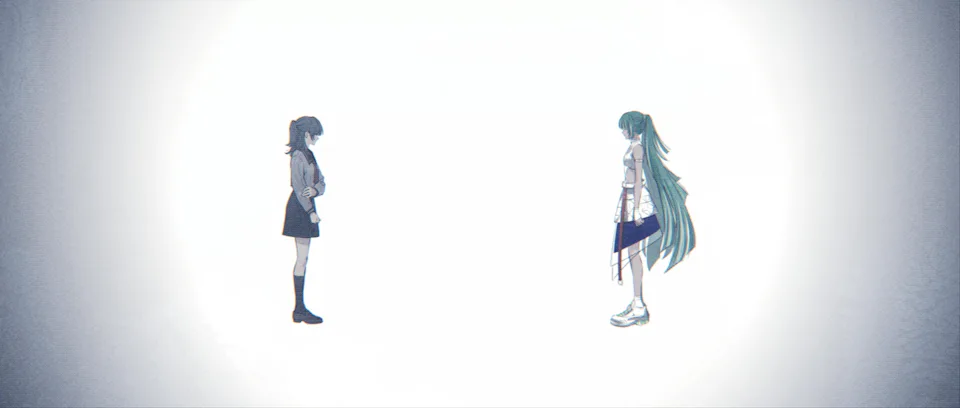
For 16 years, users who love Hatsune Miku have been continuously engaged in a variety of creative activities. This enthusiasm has prevented Miku from becoming a transient trend, and has sustained her vitality until today. Many people have devised their own interpretations of Miku, and the wide range of cultures that allow this this has led to the creation, preservation, and integration of numerous distinct images of Hatsune Miku, which have undergone successive transformations. At this very moment, a new Hatsune Miku is emerging at the forefront of the “durée”. The love and passion that have been incorporated into the current of the world are materializing, altering society, and demonstrating to society that unfamiliar things have the potential to shift from mindless rejection and apathy to gradual acceptance over the years.
This is not intended to be a claim that liking Hatsune Miku should be the standard in the world. It is a fruitless endeavor to rationalize either of the subjective preferences of the individual, liking or disliking. It is simply that I perceive the invaluable significance of “human connection and passion” in Hatsune Miku and her culture, and as a critique of the stagnant Japanese society where everyone feels powerless to alter the status quo, I cannot help but have hope for the perspective Hatsune Miku has reached and the future she is heading towards.
In this work, these transitions and structures are reaffirmed and realized in a “speculative” manner. By doing so, we will attempt to reevaluate Hatsune Miku’s cultural and social significance and position. In addition, we will incorporate “elements of deliberation” in the work that we intentionally omit in detail, allowing the viewer to interpret the work as they wish. In this way, we, the creators and the viewers, will jointly contemplate the “future” of Hatsune Miku through this music.
Character Design and CompositesAsama , Yuzuri Hal

This work was designed by Asama for the design of the characters and various illustrations appearing in the video. Since the details are the basis of the story, we will avoid explaining them here.



The perspective and posing are determined in the storyboard, a rough sketch is created accordingly, and details are adjusted by applying them to the CG. Finally, texture and other adjustments are made, and the final illustration is created to be combined with the CG in the process described below.


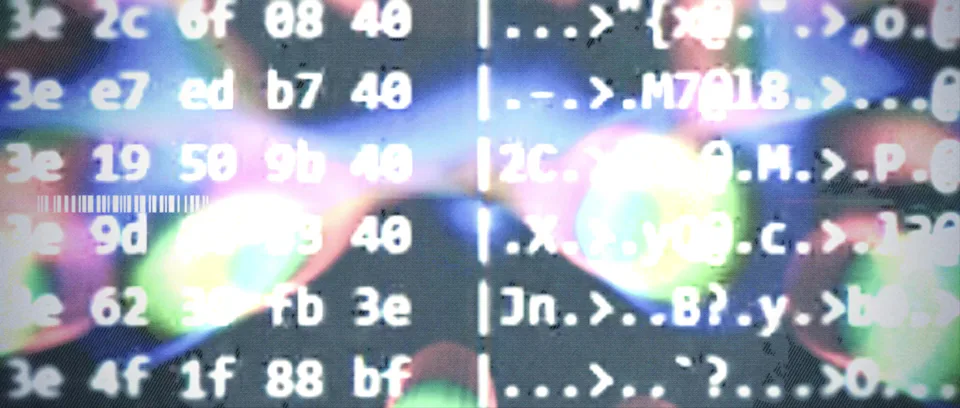
The most important process of editing and packaging the entire video, as well as the composition of the drop part, was done with the help of Yuzuri Hal. The entire material is put together, and the texture is set through filters and textures, and detailed timing corrections are made one frame at a time.
Design of imaginary virtual space with 3DCG modeling and signage systemKazuya Ohyanagi , Shibanuma , kohakuno
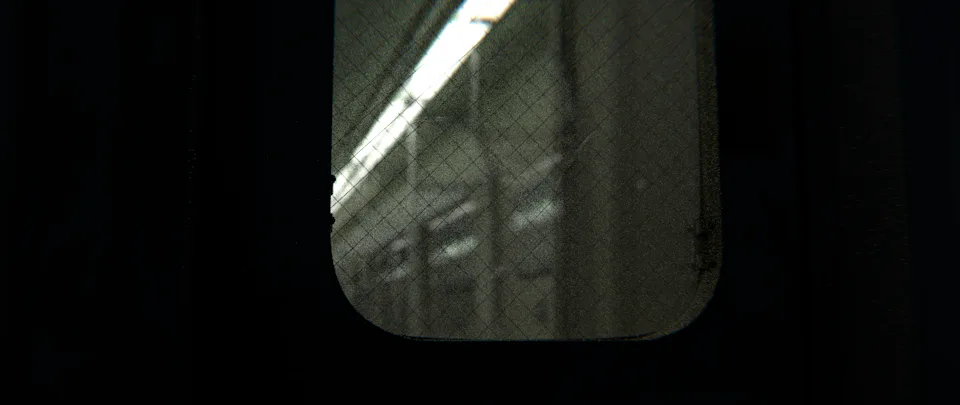
In this work, an imaginary virtual space is designed with a railroad motif, and the story unfolds from various angles of view. 3DCG design and modeling were done by Kazuya Ohyanagi.

For some modeling, Shibanuma assisted us in collecting public documents, researching the building structure, and providing advice in order to refer to historical facts and actual specifications.

The overall graphic design, including the reproduction of the railroad signage system (signs and guides) for the CG, was done by kohakuno.
∎ Explanation
The CG was created in Blender and the sign system in Illustrator. The overall policy is to adjust the CG to a texture that enhances affinity with the illustrations, and to fill in as much detail as possible in sections where character illustrations are not present, and to adjust the overall balance of the music video.

The system was designed to consolidate storyboards, production instructions, progress status, and all other information in the cloud, with important policy decisions made in real-time meetings, and the production itself carried out by each individual in a non-real-time manner. The production system was created by numbering each scene as "C-XX (XX is a number)" and creating a format that allowed the progress and instructions to be conveyed to the target audience in a concise manner, thereby eliminating conflicts even among a large number of people.

The first cut (C-01) has no illustration and is the first impression of the work, so the details are created and the texture is raised to the bottom.


Many signage systems are distributed in each CG, including the platform (C-03). These public design systems are faithfully depicted in the MV to give them a sense of reality.
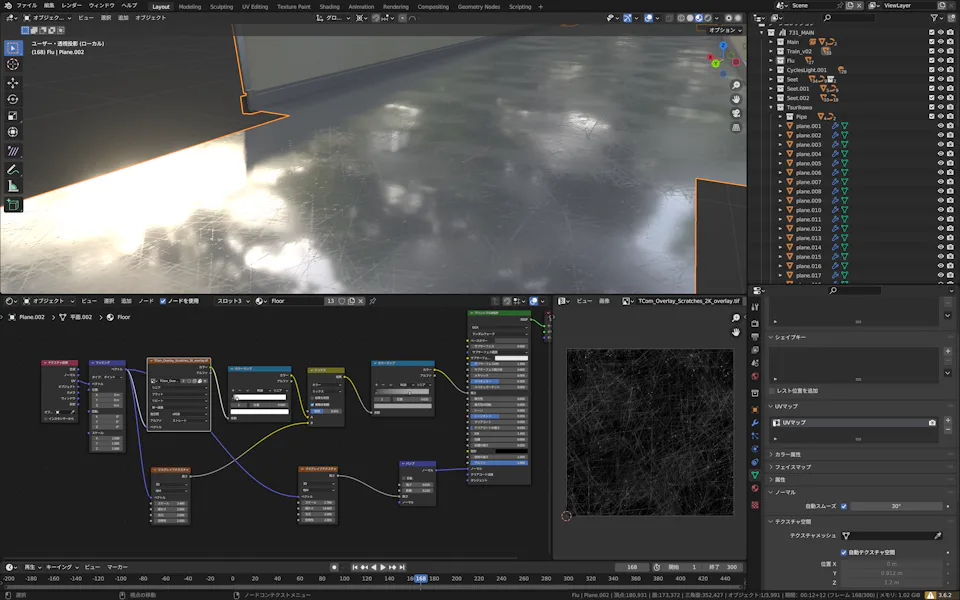
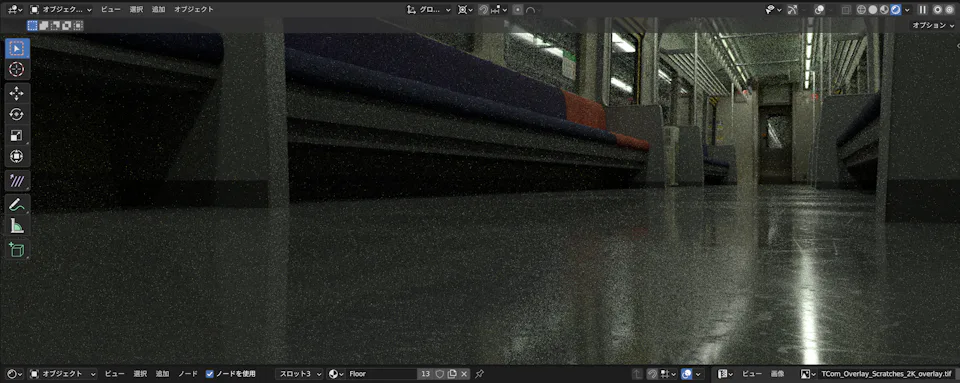
Inside the car (e.g., C-05), if you look at the floor, for example, you can see faint bumps and scrapes. This is reproduced by pasting and adjusting mass grave textures and textures for overlays. Such fine texture placement gives the object a used look and improves the overall quality.
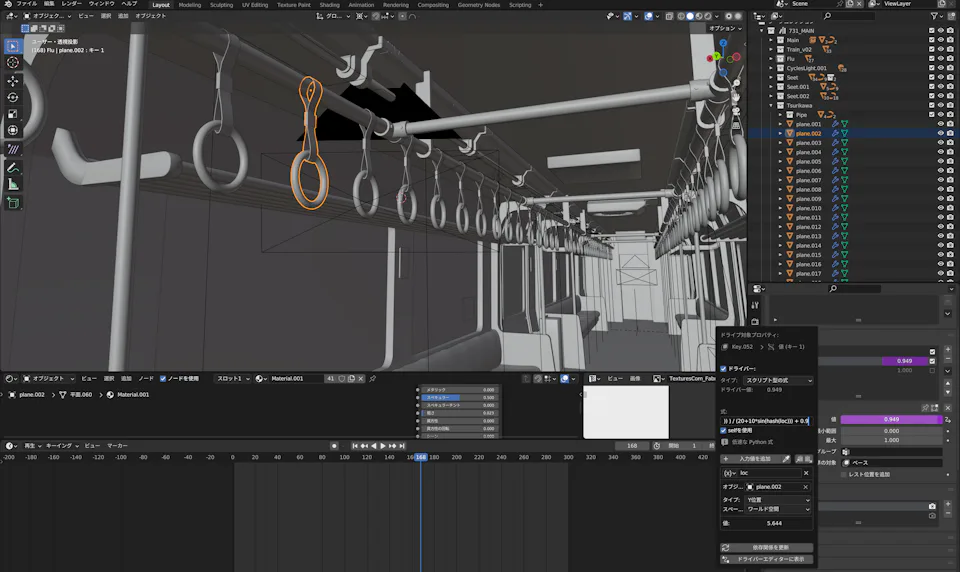
The following formula is substituted for the swing of the train suspension using a screwdriver for the value of the shape key with the angle adjusted.
sin( 3 frame / 5 + 1.2cos(hash(loc)) ) / (20+10*sin(hash(loc))) + 0.9
The result of this calculation randomizes a fine constant periodic sway with reference to the object's position. Thus, the design of motion is also done by adjusting minute amounts and constructing mathematical formulas to give the CG a sense of reality.
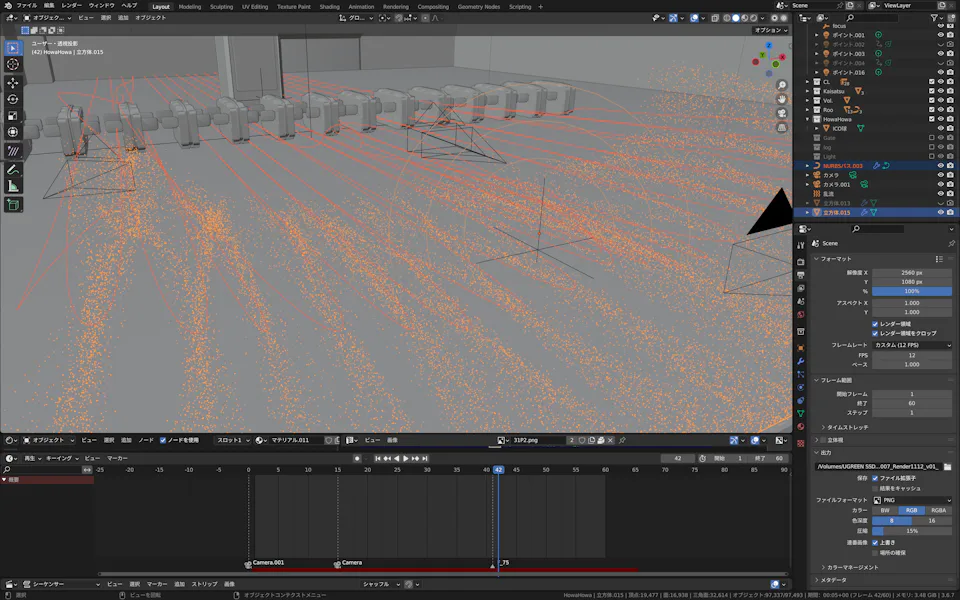
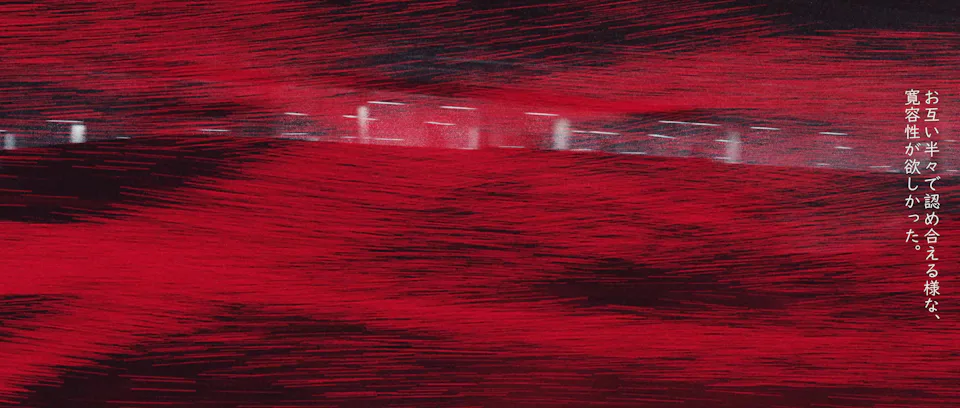
Particle expressions, including the ticket gate (C-07), are simulated internally, with each particle of light following the curve, utilizing standard Blender functions.
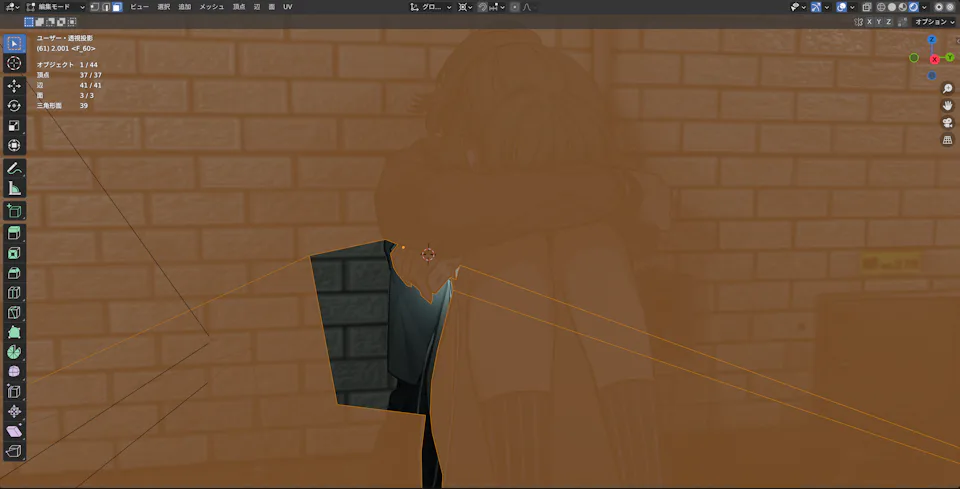
Underground walkways (e.g., C-08) are produced so that the lighting is constant and simple in composition at any angle. In addition, by masking the illustrations loaded in planes on the 3D scene and preparing area lights in between, the luminescence of the devices is made to look natural. The creativity and ingenuity of the processing reduces the sense of discomfort in the composition.
Python control of effects, Artificial life clippingmelonade , ながい

In this work, Nagai assisted in the implementation and photography of the artificial life (Lenia) and simple Boid model, which is mainly developed in the Drop section.
Lenia is a continuous-valued cellular automaton model of artificial life released under the MIT license, which uses two parameters, a kernel and a growth function, to create a species that has various forms and movements and behaves like life. By experimenting with parameters and algorithms, Lenia captures individual species as they replicate, multiply, and evolve.
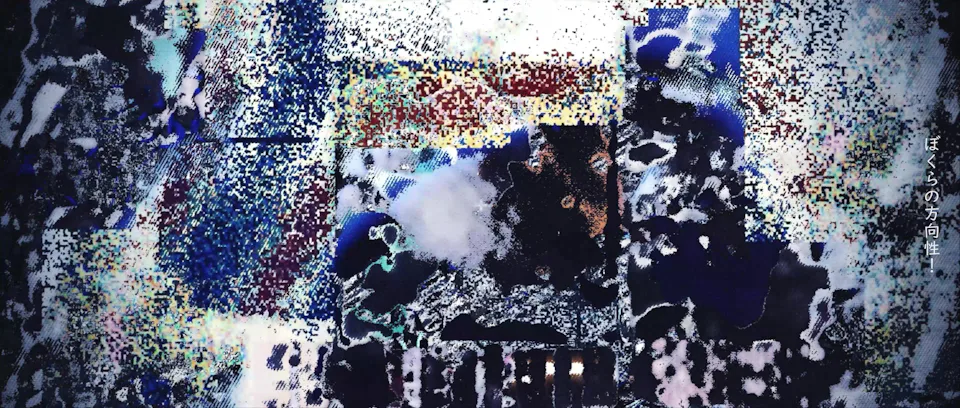
In addition, melonade helped us with 2D graphics programming (Python) control and output as effect expressions to support Drop's production.
Obtain royalty-free images that match a specific query with the image search API, and prepare images for each frame. The difference between the previous frame and the image is used to determine the next frame, which is switched and rendered at high speed, or a portion of a music video that has already been completed using a similar method is used as input, processed, and output, giving the video a disturbed expression.
Deta Analysisnaporitan
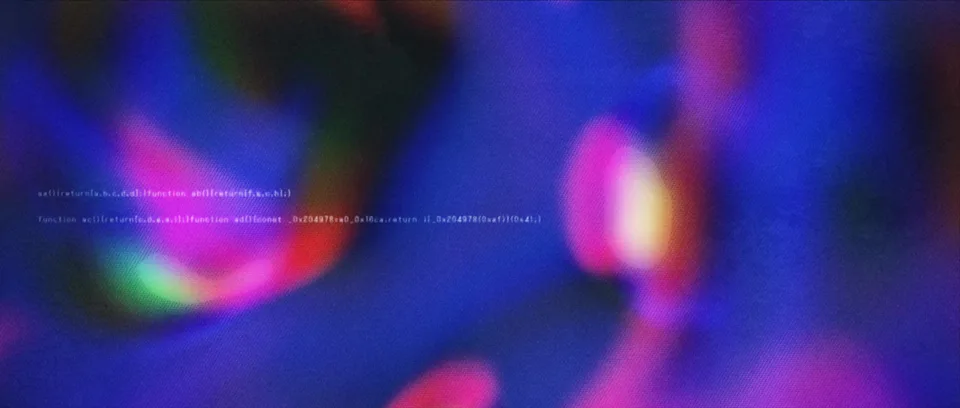
This work was supported by naporitan for data collection, analysis, and output in order to quantitatively analyze the data, verify and visualize the qualitative changes in the mik.
From Nico Nico Douga, we obtained 628082 videos with the tag "VOCALOID" (including deletions, no duplicates), 285922 videos with the tag "Hatsune Miku" (including deletions, no duplicates), and 19302 videos (including identical videos) that were counted monthly up to the top 100 monthly rankings, and created a data set and analyzed them in various ways. Important information is shown below.
∎ Number of video contributors
Extract and add up user IDs to get an approximate number of contributors.

As the right end of Fig. 1 shows, there were a total of 87958 VOCALOID tag contributors through October 2023.
∎ Visualization of video thumbnail transition
Visualize the transition of thumbnail colors from August 2007 to October 2023 by arranging the thumbnail colors from the top to the bottom.
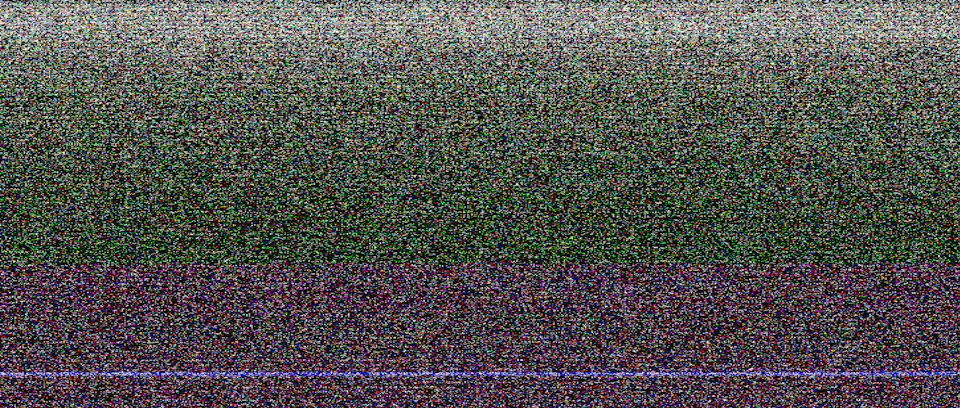
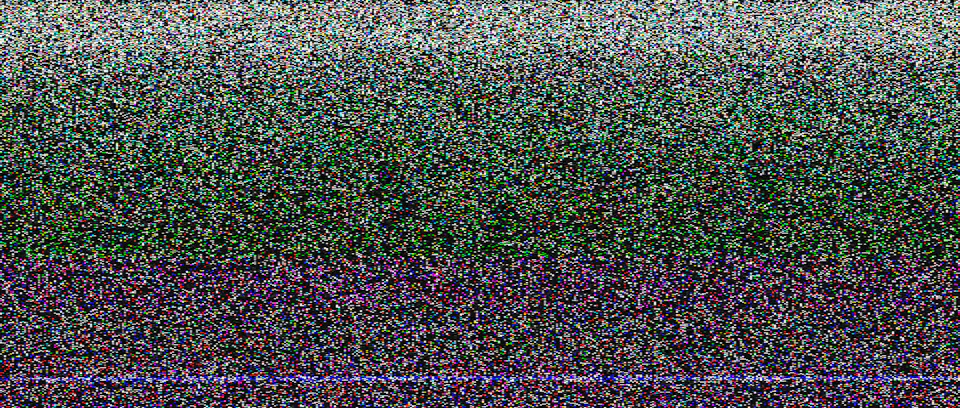
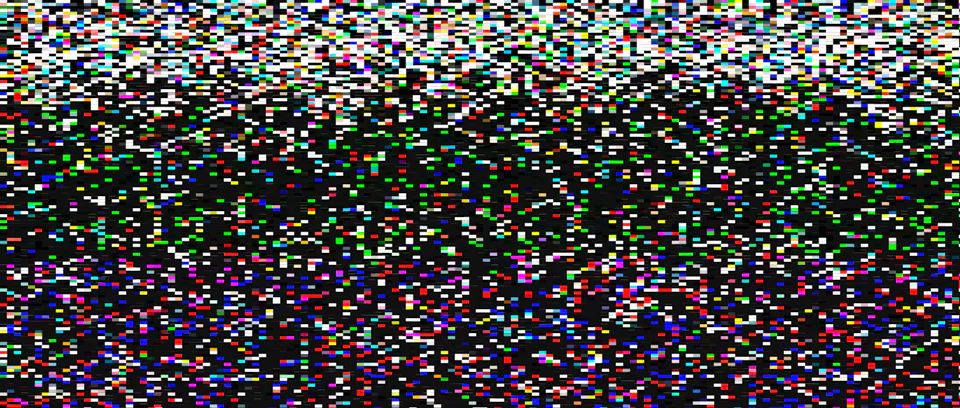
Using python PIL, numpy, and scipy, feature colors were extracted from the thumbnails (the feature color calculation algorithm employed the mode frequency and scipy.stats.mode was used). Then, they were linked to the video information in pandas, sorted and converted to csv in the order of posting, read in javascript, and rendered in order from top left to bottom right in canvas (Fig.2,3,4).
∎ Creation of a noun network for video titles
Extract words from titles and visualize changes in ties between words from year to year.


A noun network is created for each year of submission. Using mecab-ipadic-NEologd as the Japanese dictionary for morphological analysis, the top 500 most frequently occurring noun combinations were extracted, and the network was output using NetworkX (Fig. 5, 6, etc.).